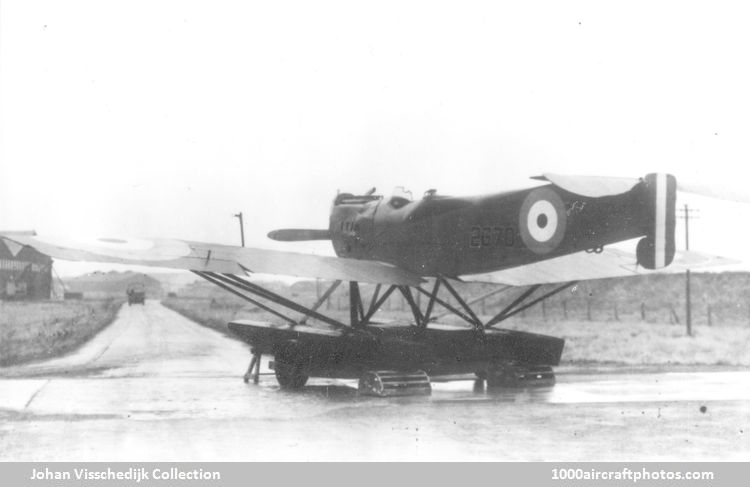11/30/2009. Remarks by Johan Visschedijk: "Ordered in April 1918, the W 33 armed reconnaissance seaplane was basically a larger and more powerful development of the W 29 and, augmenting the smaller fighter seaplane, saw service from North Sea air stations during the closing months of WW I. The W 33 was powered by a 260 hp Maybach Mb IVa six-cylinder liquid-cooled in-line engine and armament normally comprised two forward-firing 0.3 in (7,62 mm) LMG 08/15 machine guns and one Parabellum in the rear cockpit.
One aircraft was experimentally fitted with a 0.787 in (20 mm) Becker cannon in the rear cockpit, and several aircraft were fitted with radio and had one of the LMGs removed. Only a handful of W 33s had been taken into the German Navy's inventory when hostilities terminated. The pictured aircraft was examined by the British, as noticeable by the roundels, but still carried its German Navy number 2670 on the fuselage.
After German production was halted the Norwegian Naval Flying Boat Factory built 30 under license and the Norwegian Army Aircraft Factory built a further 11. The Finnish Ilmailuvoimien Lentokonetehdas (Air Force Aircraft Factory) assembled two W 33s as pattern aircraft in 1922, and license-manufactured a further 120 during 1923-26. The Finnish military designation was A.22.
As a counter-payment for war repairs, Japan received one W 33 from Germany, and in 1922 the Japanese Navy ordered the aircraft as the Navy Type Hansa Reconnaissance Seaplane. General similar in appearance 310 aircraft were produced, 150 by Aichi and 160 by Nakajima."
